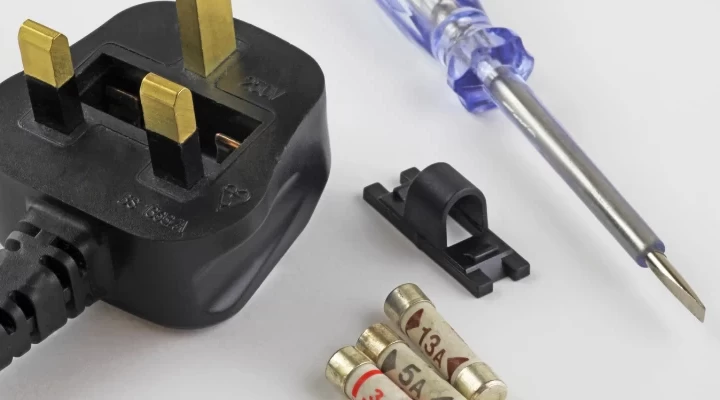Table of Contents
In some cases, it might not be mandatory to PAT test new equipment. However, under The Electricity at Work Regulations, you must ensure that the equipment is safe. One way to achieve this is through a visual inspection of the item before putting it to use. It's important to consider the type of appliance, its potential hazards, and the environment in which it will be used, as these factors will influence the necessity and frequency of PAT testing.
Remember, the goal is to maintain a safe environment. While PAT testing new appliances may not always be required, it could provide additional peace of mind, particularly if the equipment could be hazardous. Keep in mind that 'new' can refer to brand-new equipment from a manufacturer or simply new to your location. In either case, prioritizing safety is key.
Understanding PAT Testing
What is PAT Testing?
PAT testing, also known as Portable Appliance Testing, is a process that involves examining and testing your electrical equipment and appliances to ensure they are safe to use. The goal of this testing is to identify any defects or potential hazards that could be present in your portable electrical appliances.
Typically, a visual examination is conducted, followed by further testing using specialized equipment. This helps to detect defects that may not be visible to the naked eye. The results of these tests can help you take necessary precautions and maintain a safe environment when using electrical appliances.
Differences Between Fixed Installation and Portable Appliance Testing
Due to their nature, portable appliances are often subjected to more wear and tear than their fixed counterparts, making PAT testing crucial to ensure ongoing safety. Here are the key differences between fixed installation and portable appliance testing:
-
Fixed Installation: This involves testing electrical installations, such as wiring, sockets, and fixed equipment. This type of testing is generally carried out by a qualified electrician and forms part of periodic inspections within a building.
-
Portable Appliance Testing: This focuses on portable electrical appliances, such as computers, heaters, and small kitchen appliances. These items are more prone to damage through frequent use, handling, transportation, and occasionally, rough treatment. Regular inspections and tests are necessary to maintain safety and performance.
In summary, PAT testing is an essential practice for ensuring the safety of portable electrical equipment. It is important to conduct these tests regularly and address any potential hazards before they lead to accidents or damage. By being diligent in maintaining your appliances, you can create a safer environment for yourself and those around you.
New Equipment and PAT Testing
Do You Need to PAT Test New Equipment?
When it comes to purchasing new electrical equipment, you may wonder if you need to perform Portable Appliance Testing (PAT) right away. In general, new equipment should be supplied in a safe condition and not require a formal portable appliance inspection or test. However, a simple visual check is recommended to verify the item is not damaged.
Exceptions and Considerations
Although a full PAT test may not be necessary for brand-new equipment, there are some exceptions and considerations you should keep in mind:
-
If the equipment could be hazardous, such as a heater, it's recommended that you perform a PAT test for extra safety measures.
-
The term "new" can have different meanings – it could refer to brand-new equipment shipped from a manufacturer or a second-hand item that's new to your business. In the case of second-hand equipment, it's a good idea to perform a PAT test.
When deciding whether or not to PAT test new electrical equipment, use your discretion and always consider safety first. Remember that while most electrical safety defects can be found through visual examination, some defects can only be detected through testing.

Assessing the Need for a PAT Test
Visual Inspection
Before deciding whether to perform a PAT test on new equipment, it's essential to conduct a thorough visual inspection. During this process, you should examine the external condition of the appliance, checking for any visible damage, including frayed cords, cracked casing, and loose components. A visual examination is crucial since it can identify a majority of electrical safety defects.
Formal Appliance Inspection or Test
If the visual inspection doesn't reveal any apparent issues, you might consider a formal portable appliance inspection or test. There are two types of tests you should be aware of:
Electrical Test
An electrical test involves using specialized equipment, such as a PAT tester, to assess the safety of the appliance. This can help identify issues that the visual inspection might miss. However, performing an electrical test is only necessary when a workplace risk assessment procedure deems it essential, considering factors such as the type of equipment, its use, and the environment where it operates.
Maintenance Record Review
Another essential aspect of a portable appliance inspection is reviewing the maintenance records. Even though new equipment might not have any records yet, it's crucial to establish a record-tracking system moving forward to monitor the equipment's performance and identify any emerging issues before they become safety risks.
While it is not mandatory to PAT test new equipment, you should make an informed decision based on the appliance's potential hazards and your workplace safety requirements. By carefully assessing the need for a PAT test through visual inspections, formal appliance inspections, or tests, you'll ensure the safety of your equipment and those who use it.
PAT Testing for Specific Devices
When it comes to PAT testing new equipment, it's essential to understand the testing requirements for specific devices. In this section, we will discuss the PAT testing process for wireless keyboards.
Wireless Keyboard
A wireless keyboard is a common device used in offices and homes. Since it is battery-operated and not directly connected to the mains power supply, a wireless keyboard falls under the category of IT equipment. According to the PAT Testing Requirements & Equipment - Complete Guide at RS Components, IT equipment should be tested every 48 months.
However, for a new wireless keyboard, a full PAT test may not be necessary. Instead, a simple visual inspection is recommended to ensure the item is not damaged. During the visual inspection, pay attention to the following:
-
Physical damage to the keyboard housing
-
Any loose or missing screws
-
Damage to the battery compartment
-
Signs of liquid spills or corrosion
Keep in mind that while following testing frequency guidelines is important, you should also consider the environment and usage of the device. For instance, if the wireless keyboard is frequently used or exposed to harsh conditions, you may want to inspect and test it more frequently.
Frequency of PAT Testing
Regular PAT Testing
To ensure the safety of your electrical appliances and equipment, it's essential to conduct regular Portable Appliance Testing (PAT). The frequency of PAT testing depends on the type of equipment, its usage, and the environment in which it's placed.
For instance, an electric drill on a construction site might require more frequent testing compared to a desktop monitor in an office setting. Keeping up with regular PAT testing can help you identify any defects or potential hazards, providing a safe environment for yourself and others.
It's important to understand that there are no specific legal guidelines or requirements that dictate how often PAT tests should be conducted. However, considering the risk associated with your equipment will help you determine an appropriate testing frequency. For example:
-
Class 1 equipment: Recommended to be tested every 12 months.
-
Classes 2 and 3 equipment: Recommended to be tested every 48 months.
Factors that may influence the frequency of PAT testing include:
-
Usage: Frequently used appliances might require more frequent testing.
-
Age: Older appliances might be more prone to defects and wear, necessitating additional testing.
-
Risk: Equipment that poses a significant risk of injury or death, such as power tools or heavy machinery, should be inspected more frequently.
Regarding new equipment, it's generally a good idea to conduct a PAT test, particularly if the item could be potentially hazardous, such as a heater source.
Remember to adopt a proactive approach to ensure the safety of your electrical appliances through regular PAT testing. This helps mitigate risks and maintain a secure environment for everyone involved.






